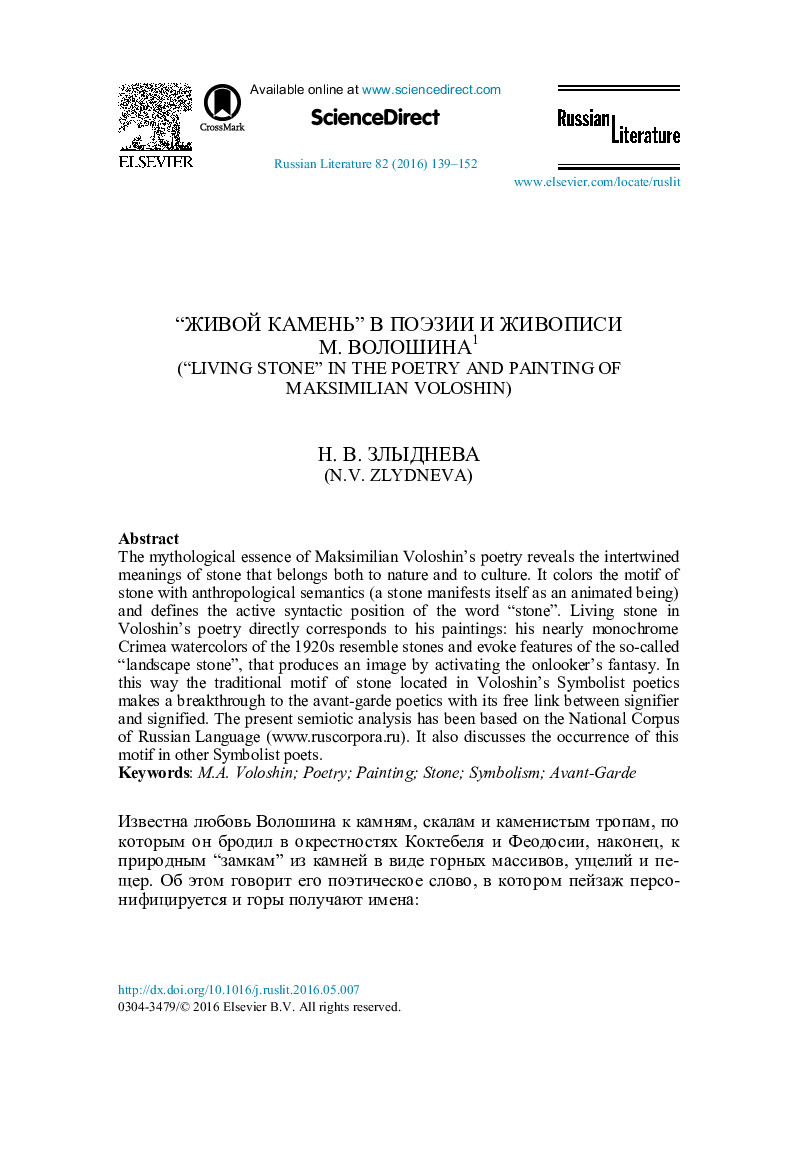| Article ID | Journal | Published Year | Pages | File Type |
|---|---|---|---|---|
| 1103765 | Russian Literature | 2016 | 14 Pages |
The mythological essence of Maksimilian Voloshin's poetry reveals the intertwined meanings of stone that belongs both to nature and to culture. It colors the motif of stone with anthropological semantics (a stone manifests itself as an animated being) and defines the active syntactic position of the word “stone”. Living stone in Voloshin's poetry directly corresponds to his paintings: his nearly monochrome Crimea watercolors of the 1920s resemble stones and evoke features of the so-called “landscape stone”, that produces an image by activating the onlooker's fantasy. In this way the traditional motif of stone located in Voloshin's Symbolist poetics makes a breakthrough to the avant-garde poetics with its free link between signifier and signified. The present semiotic analysis has been based on the National Corpus of Russian Language (www.ruscorpora.ru). It also discusses the occurrence of this motif in other Symbolist poets.
